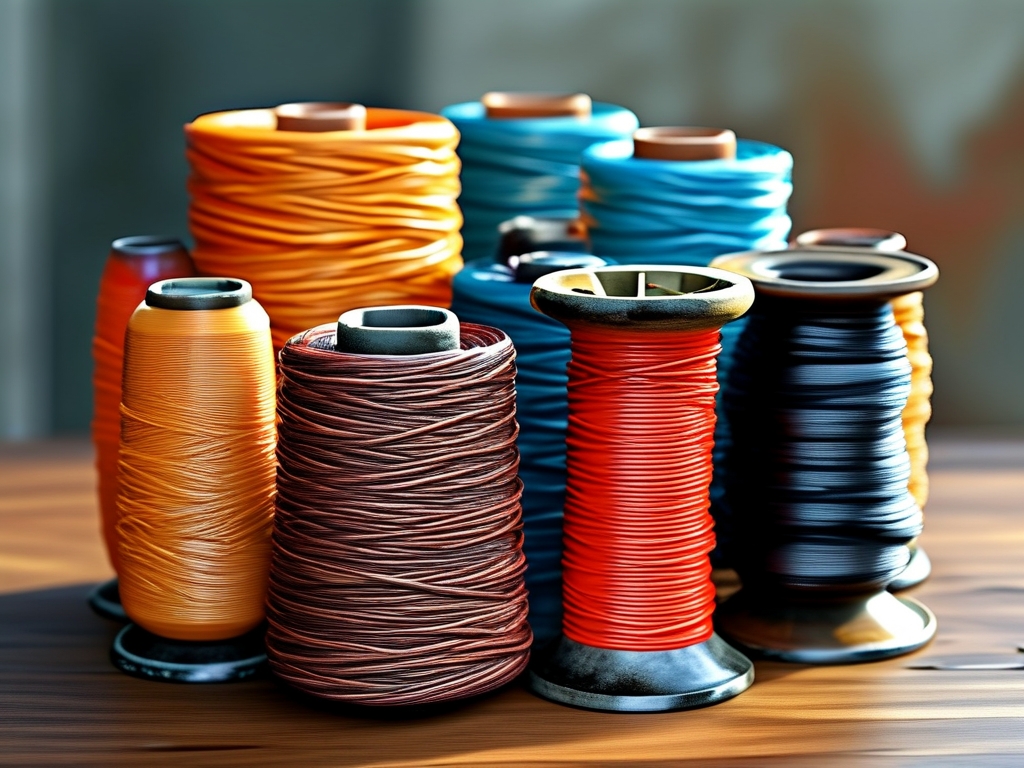Stranded wires, composed of multiple thin strands twisted or braided together, are widely used in electrical systems, telecommunications, and industrial applications due to their flexibility, durability, and conductivity. Understanding the materials and algorithms involved in their production is critical for optimizing performance and cost-efficiency. This article explores the common materials used in stranded wire manufacturing and the computational algorithms that drive their design and quality control.

1. Common Materials in Stranded Wire
1.1 Conductive Materials
- Copper: The most widely used material due to its excellent electrical conductivity (5.96×10⁷ S/m) and malleability. Annealed copper strands are preferred for flexibility.
- Aluminum: A lightweight, cost-effective alternative to copper, often used in overhead power lines. Its lower conductivity (3.5×10⁷ S/m) is compensated by larger cross-sectional areas.
- Copper-Clad Steel (CCS): Combines steel's tensile strength with copper's conductivity, ideal for applications requiring mechanical resilience, such as submarine cables.
- Silver-Coated Copper: Used in high-frequency applications (e.g., RF cables) to minimize signal loss via the "skin effect."
1.2 Insulating Materials
- PVC (Polyvinyl Chloride): Affordable and flame-retardant, commonly used for low-voltage cables.
- Polyethylene (PE): Offers superior moisture resistance, making it suitable for outdoor or underground installations.
- Silicone Rubber: Provides extreme temperature resistance (-60°C to 200°C), used in aerospace and automotive industries.
- PTFE (Teflon): High chemical and thermal stability, often applied in military and medical devices.
2. Key Algorithms in Stranded Wire Design and Manufacturing
2.1 Geometric Arrangement Algorithms
The arrangement of strands significantly impacts flexibility and current-carrying capacity. Common algorithms include:
- Concentric Stranding: Uses a central core with layers of strands added concentrically. Algorithms calculate optimal lay length (twist rate) to balance flexibility and structural integrity.
- Bunched Stranding: Randomly groups strands for maximum flexibility. Computational models predict packing density and resistance to deformation.
- Compressed Stranding: Reduces interstice spaces between strands via pressure, improving conductivity. Finite Element Analysis (FEA) simulates compression forces.
2.2 Electrical Performance Optimization
- Skin Effect Mitigation: At high frequencies, current tends to flow near the conductor's surface. Algorithms like the Bessel Function model predict AC resistance and optimize strand diameter to minimize losses.
- Proximity Effect Analysis: Computational tools (e.g., COMSOL Multiphysics) simulate electromagnetic interactions between adjacent strands to reduce eddy current losses.
2.3 Quality Control Algorithms
- Defect Detection: Machine vision systems paired with convolutional neural networks (CNNs) identify surface flaws like cracks or uneven insulation.
- Tensile Strength Prediction: Machine learning models trained on material datasets forecast mechanical behavior under stress, ensuring compliance with standards like IEC 60228.
- Twist Consistency Monitoring: Real-time feedback loops adjust machinery to maintain uniform lay length, preventing performance degradation.
3. Case Study: Algorithm-Driven Design for Aerospace Cables
A leading manufacturer reduced cable weight by 15% using a hybrid algorithm combining genetic algorithms (GA) and topology optimization. The GA selected optimal materials (e.g., aluminum-magnesium alloy strands), while topology optimization minimized redundant insulation layers without compromising EMI shielding.
4. Challenges and Future Trends
- Material Limitations: Copper scarcity drives research into carbon nanotube-based strands, though scalability remains a hurdle.
- AI Integration: Reinforcement learning is being tested to autonomously adjust manufacturing parameters in dynamic environments.
- Sustainability: Algorithms now prioritize recyclable materials and energy-efficient production methods to meet EU RoHS directives.
5.
Stranded wire manufacturing relies on a synergy of advanced materials and sophisticated algorithms. From copper’s conductivity to AI-driven defect detection, these components ensure reliability in demanding applications. As computational power grows, expect further innovations like self-healing insulation and quantum-inspired optimization models to redefine the industry.

